The Coast is Queer: A Lighthouse for LGBTQ+ Literature
Coast is Queer is what arts should look like when it's done with excellence, flair, and genuine commitment to artistic merit and democratic access.... something genuinely radical: where artistic rigor and radical inclusion aren't in tension but in harmony.
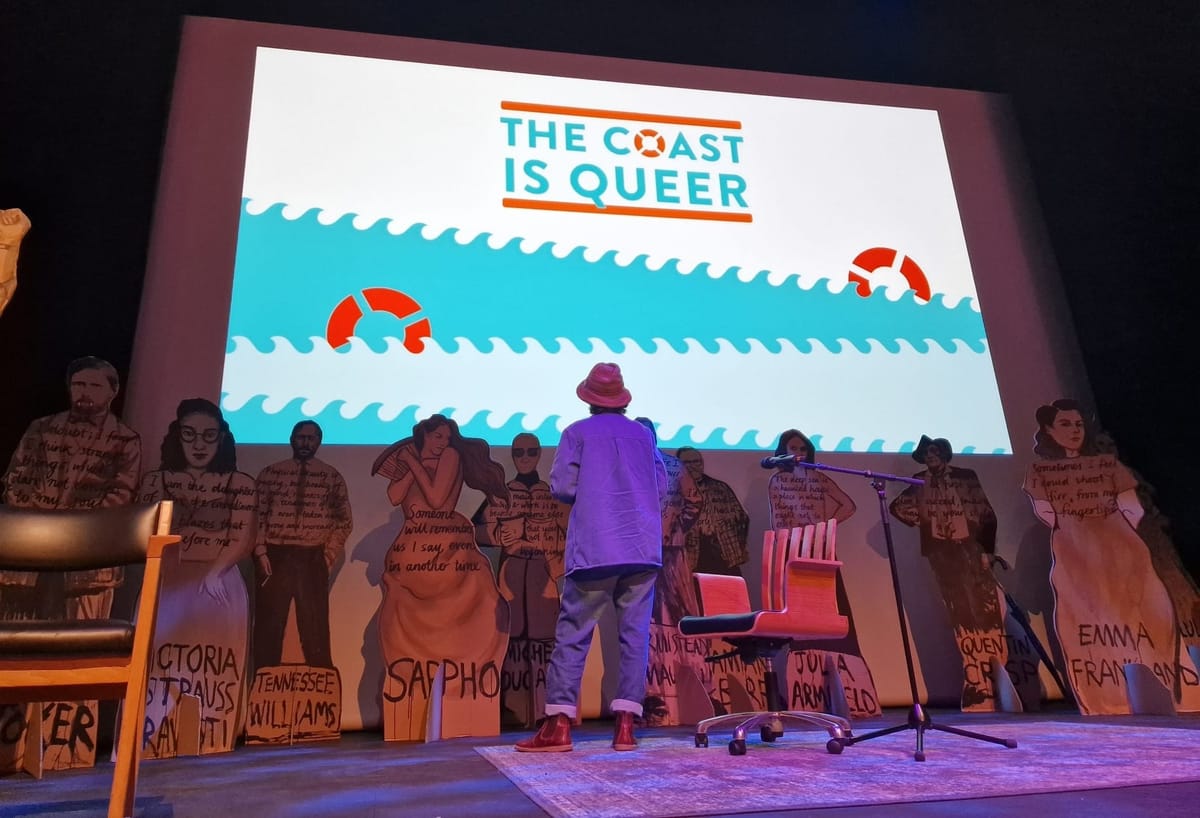
There are festivals, and then there are festivals that rewrite what a festival can be. The Coast is Queer—the UK's biggest and brightest LGBTQ+ literature festival—belongs firmly in the latter category. Held within the brick-lined vaulting and curvaceous comfort of the Attenborough Centre for the Creative Arts at Sussex University, this gathering of authors, poets, performers, scriptwriters, activists, and audiences celebrated queer lives and writing; and embodied what radical inclusivity looks like when excellence meets intention.
This was a masterclass in festival curation. The lineup was extraordinary—a constellation of established voices and emerging talents. Big names sat alongside debut writers, spoken word artists shared space with essayists, and every choice felt deliberate, earned. This programme understood the infinite variety of LGBTQ+ experience and reflected it back with intelligence and fire.
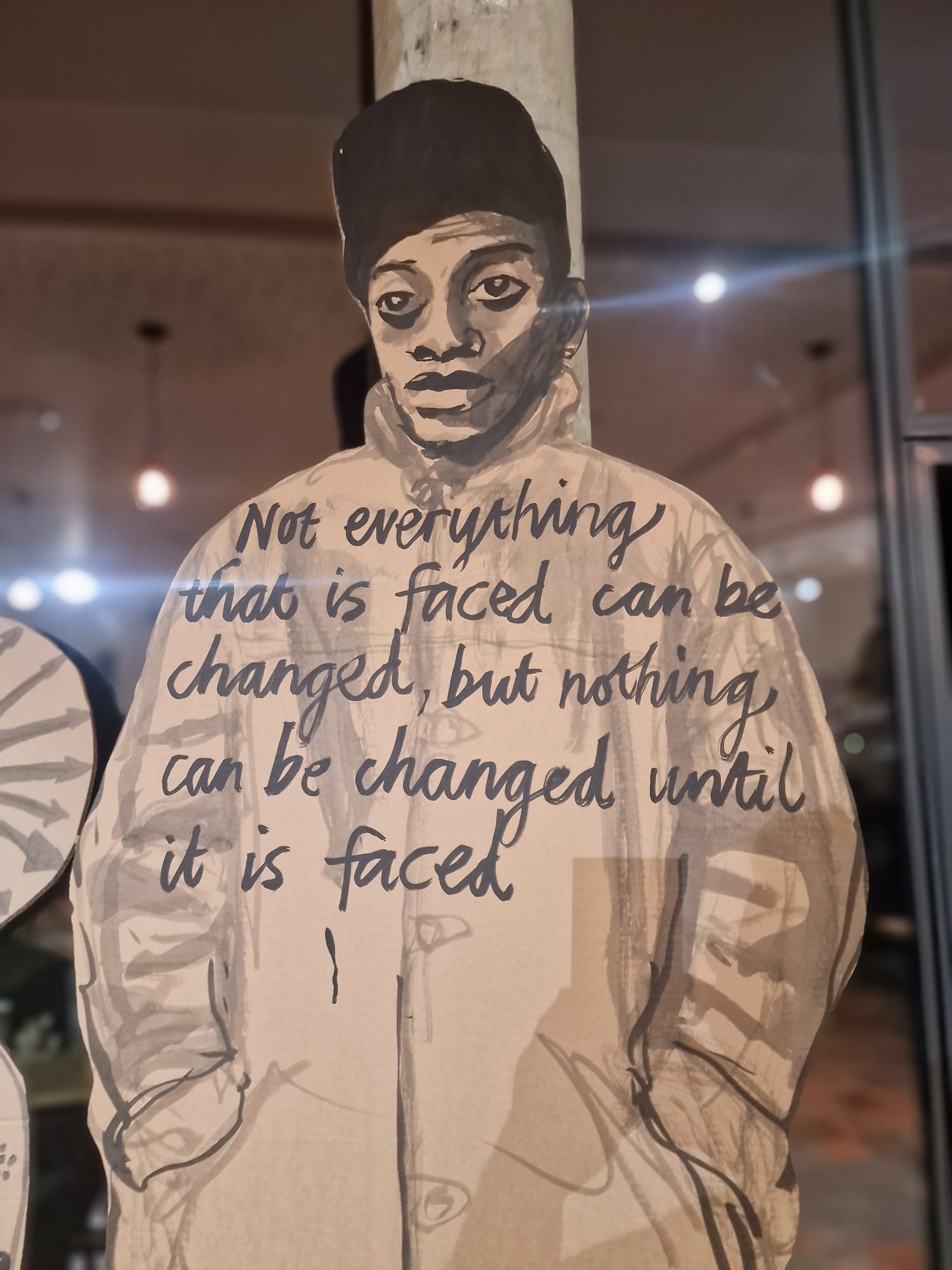
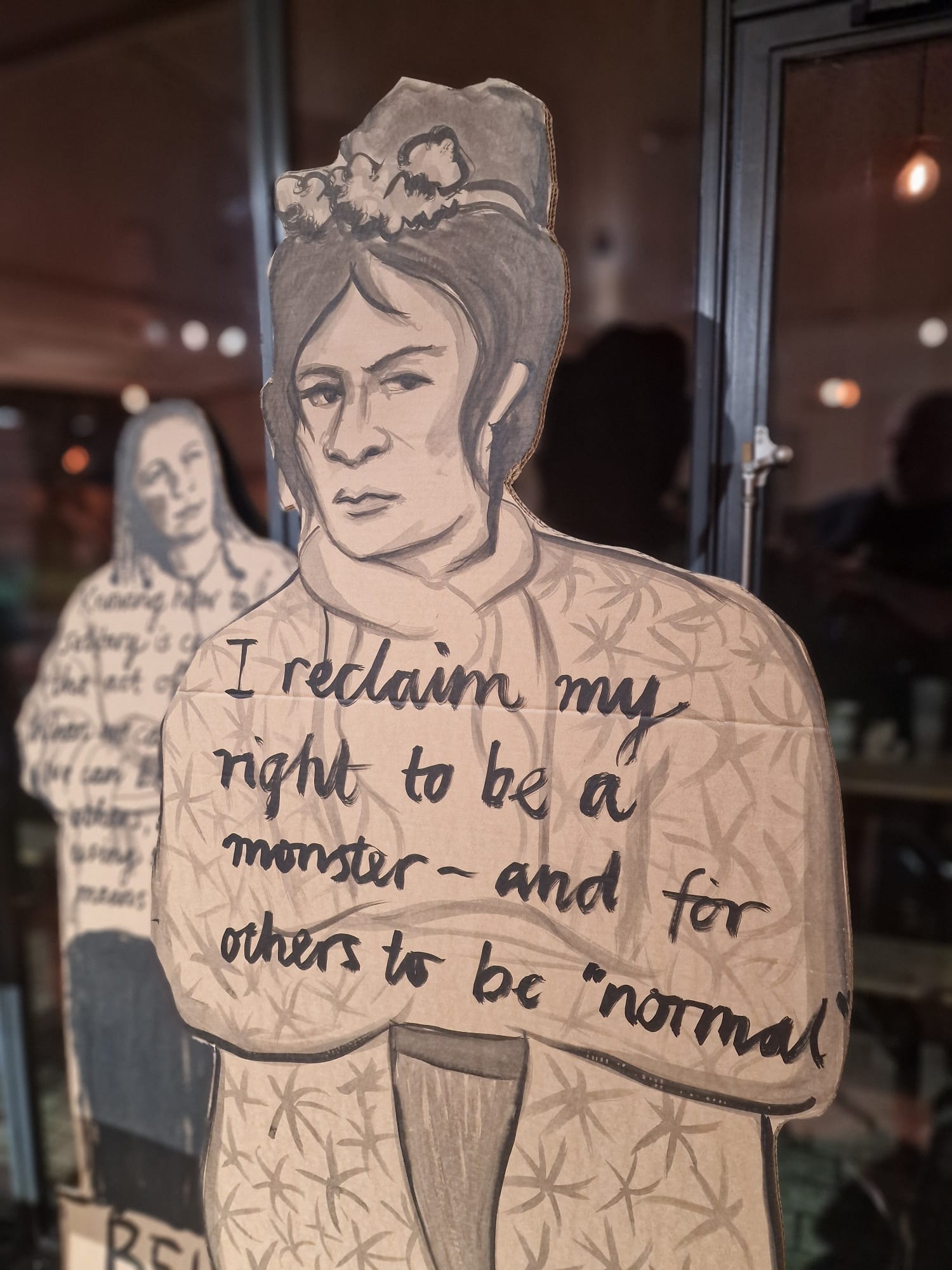
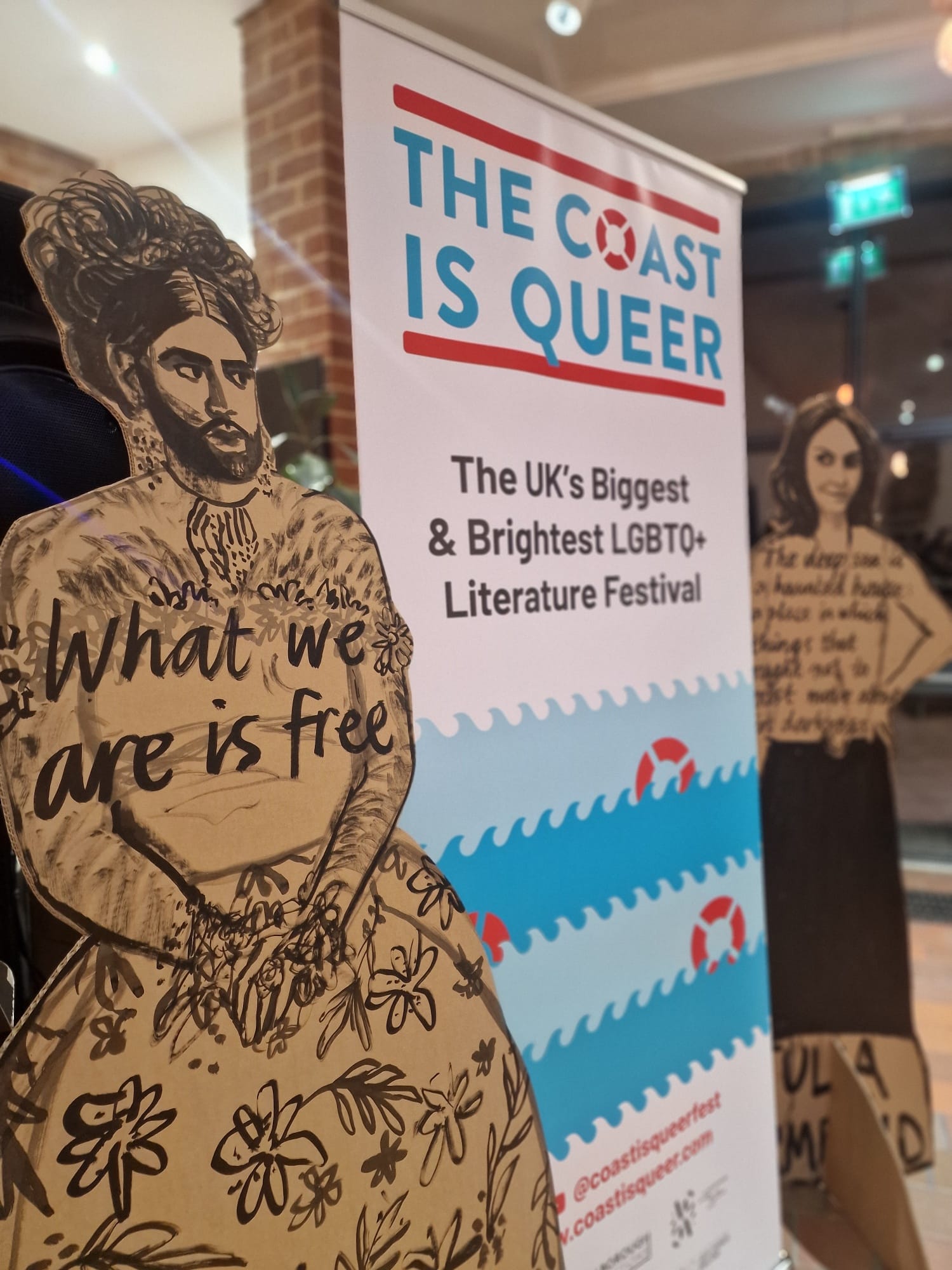
A dazzling lineup of cardboard cutouts, each celebrating queer icons and radical thinkers with handwritten quotes that sparkle with resistance and sass.
What struck me was how the festival's structure itself became an act of care. The balance of free events alongside ticketed programming meant that access wasn't determined by economic privilege—a bold stance in an arts landscape increasingly gatekept by cost. This festival was rooted in intersectionality not as buzzword but as practice, recognizing that people deserve more than tokenistic invitation. They deserve infrastructure that says: you belong here, and we've thought about what you need.
And The Coast is Queer delivered. Without hyperbole, this is probably the best example of accessible festival infrastructure and programme production I've seen. They literally write the book on how to create an inclusive, disabled-affirming space. From the physical environment to the scheduling, from the provision of support to the attitude of every volunteer, accessibility not as afterthought—but foundational architecture.
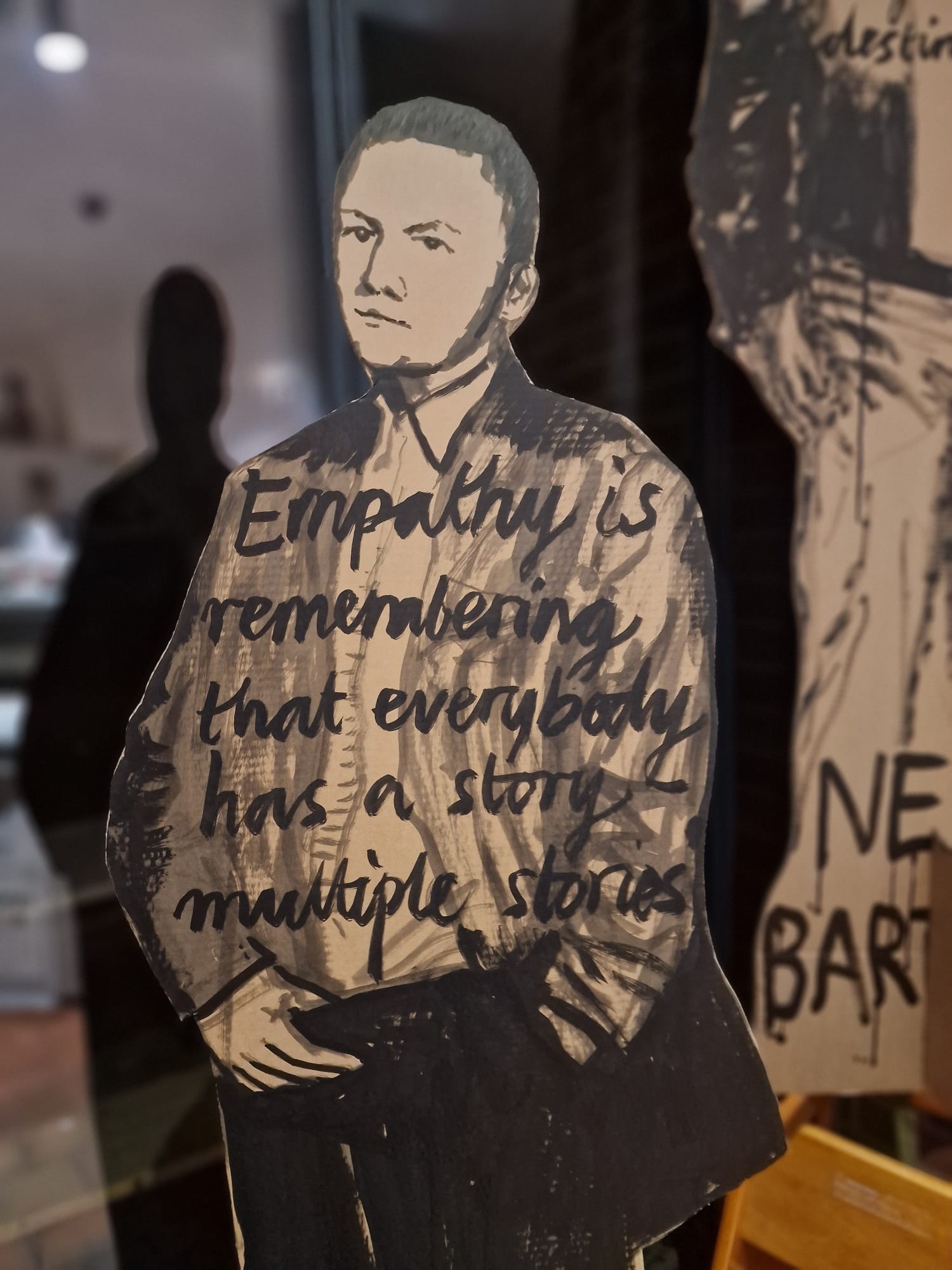
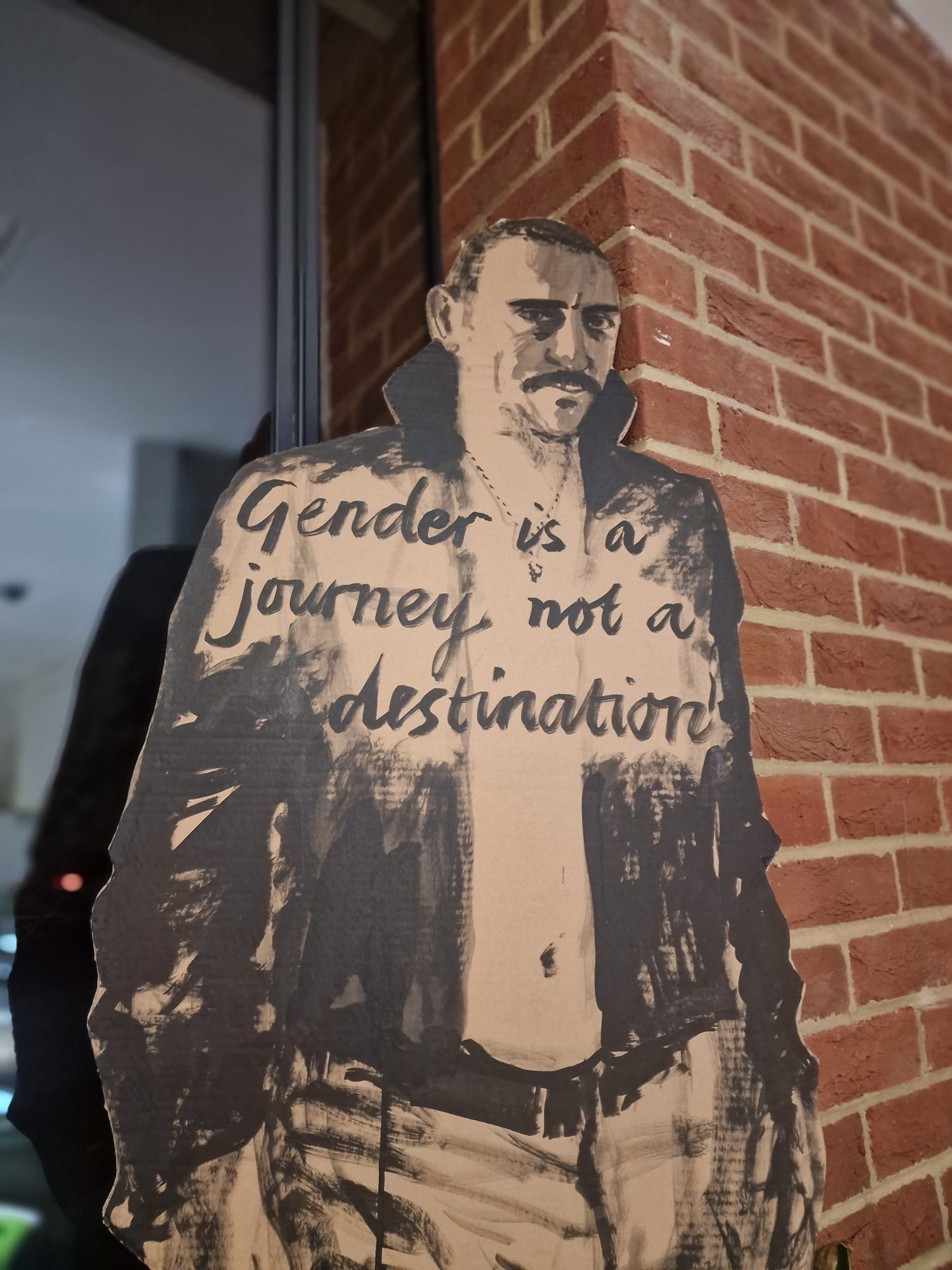
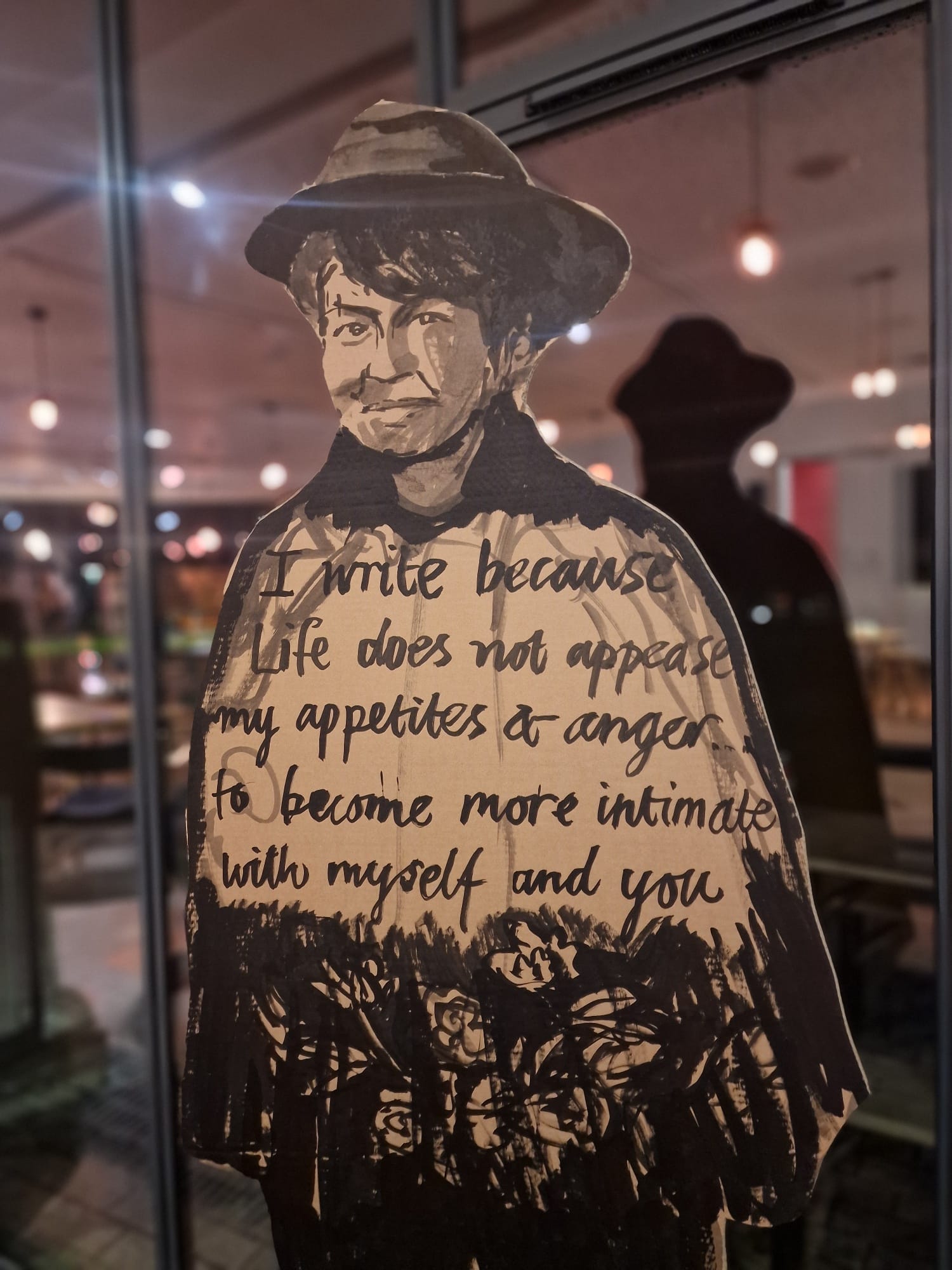
A dazzling lineup of cardboard cutouts, each celebrating queer icons and radical thinkers with handwritten quotes that sparkle with resistance and sass.
The programming itself sang with ambition and range. Workshops explored craft with generosity and rigor. Panel discussions on publishing, identity, archiving, and creative care crackled with intellectual energy, refusing easy answers while fostering genuine dialogue. These weren't performative conversations; they were spaces where ideas collided, evolved, challenged. The festival asked serious questions about how we preserve queer histories, who gets to tell which stories, and what forms our narratives might take in the future—then gave us the time and space to sit with the complexity of those questions.
The daily rhythm—building from daytime events through to headline evening performances—created a sense of occasion, of journey. Each evening felt like a homecoming, the ACCA throbbing with expectant thrill, audiences buzzing with that particular electricity that comes when community gathers around art that reflects them back to themselves with honesty and beauty. Most events were sold out with waiting lists—a testament not just to savvy marketing but to genuine hunger for what this festival offered.
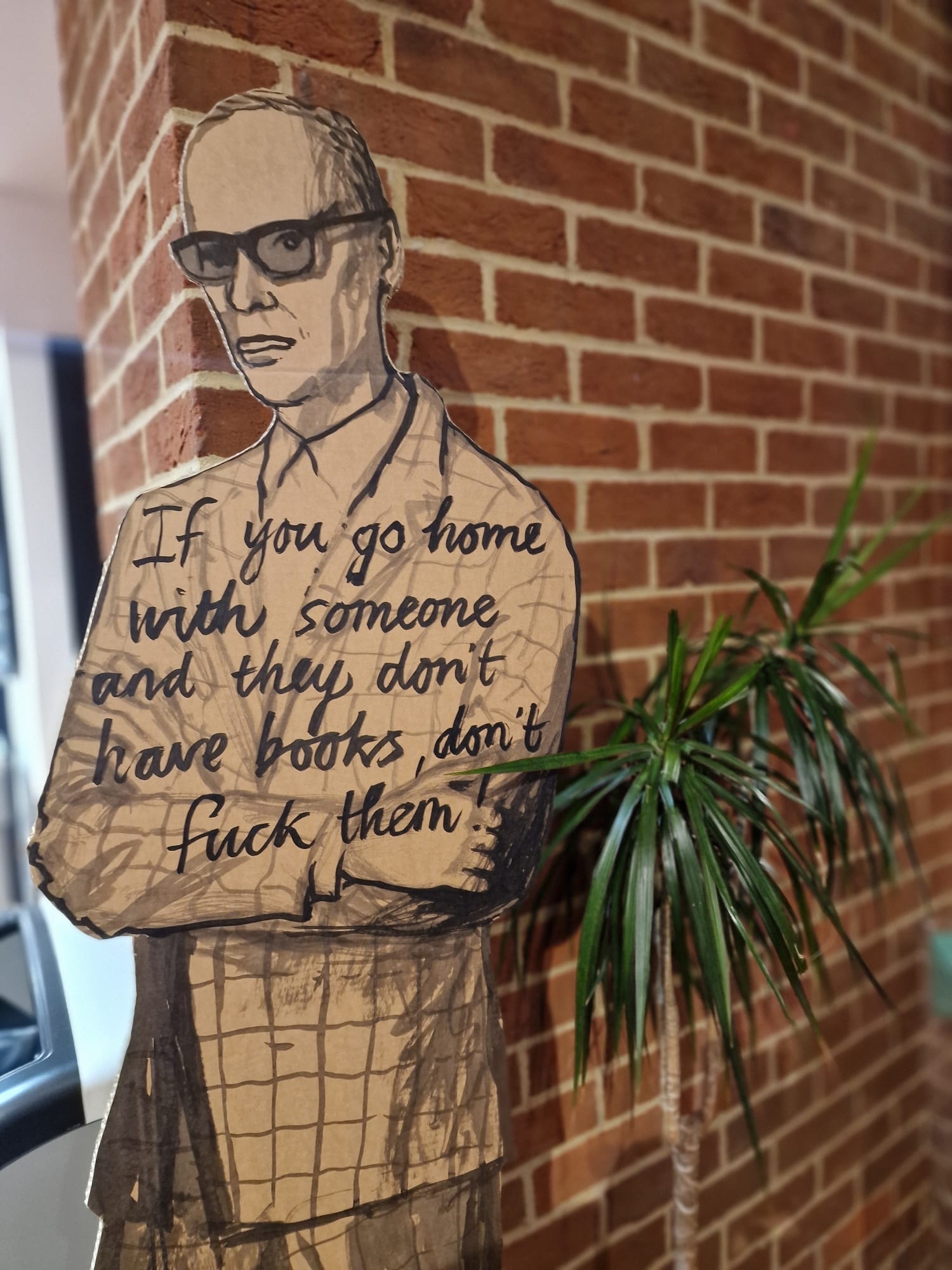
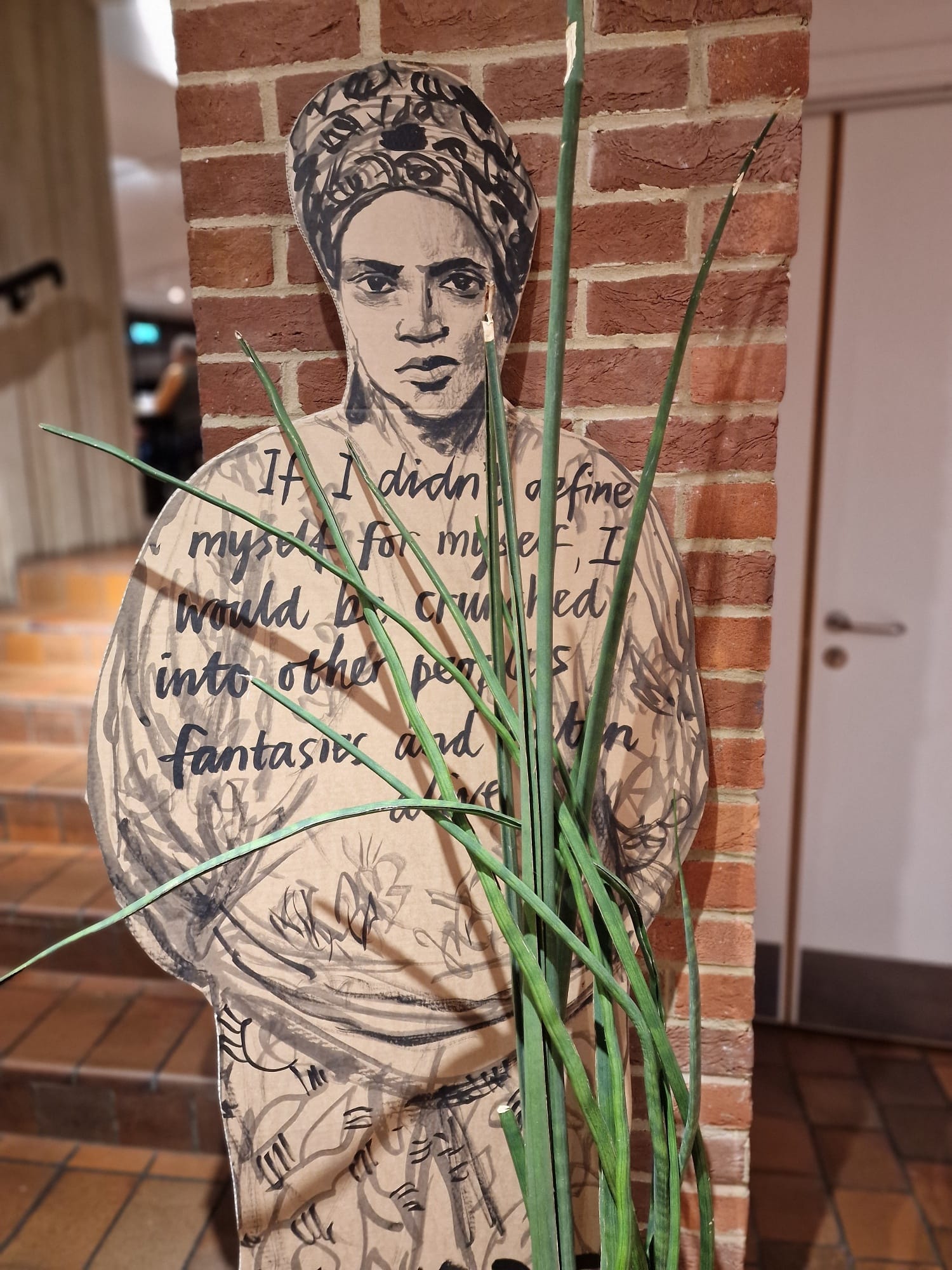
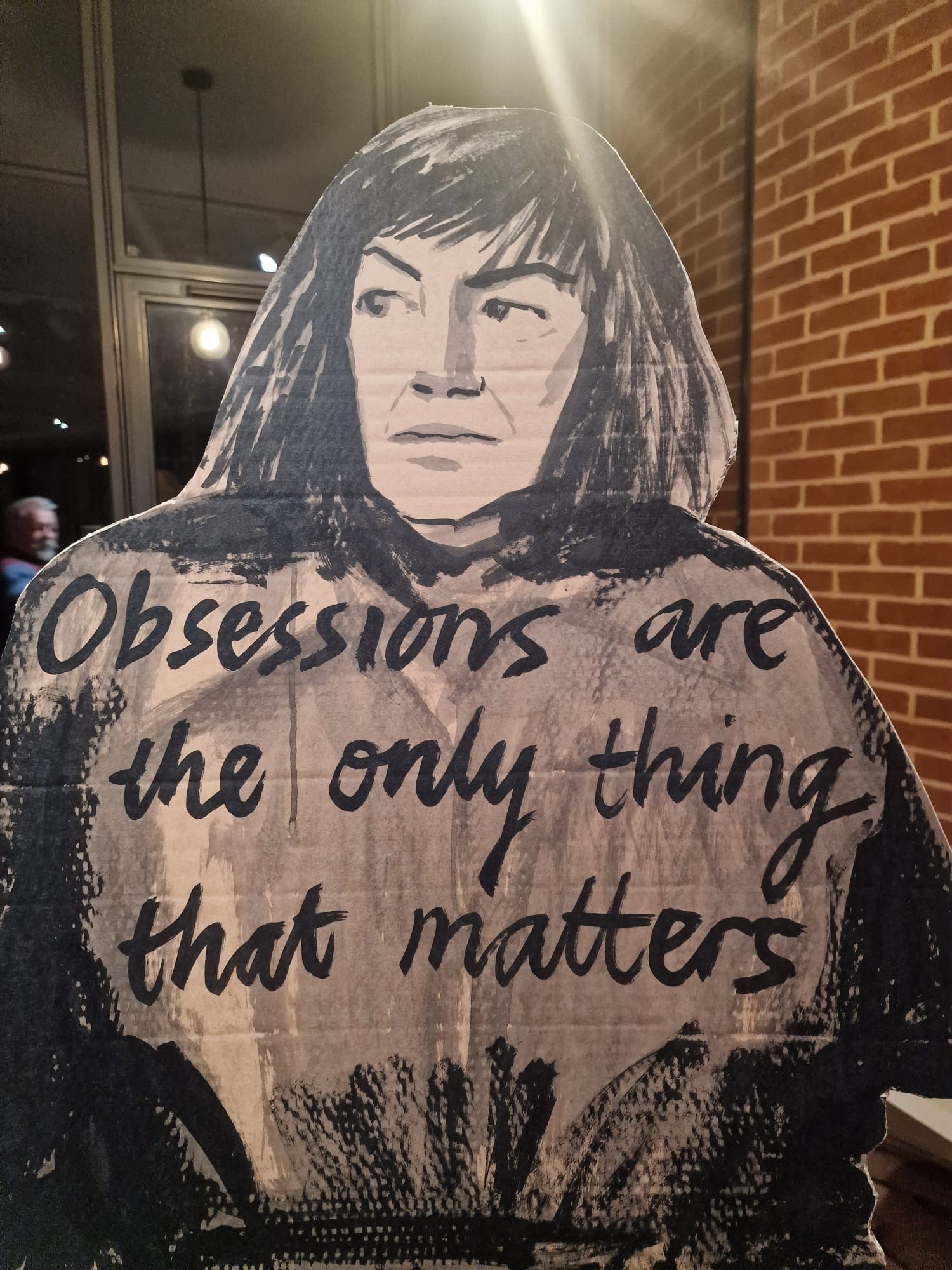
A dazzling lineup of cardboard cutouts, each celebrating queer icons and radical thinkers with handwritten quotes that sparkle with resistance and sass.
I was impressed by the demographic breadth in those sold-out rooms. This wasn't just the usual queer Brighton & Sussex crowd (though they were there). People had travelled from across the South East & UK, tourists had planned trips around the programme, and the audience reflected a wider spectrum of age, race, class, and identity than we typically see in even well-intentioned queer spaces. That diversity didn't happen by accident—it was the direct result of intentional programming and accessible practice.
On a weekend marred by division and discord in other parts of the city, Coast is Queer was a redoubt of respect and inclusion, showcasing how real LGBTQ+ communities listen, learn, and support each other for the common aim. In these carefully curated rooms, amid the brick and curves of the ACCA, we witnessed what's possible when we choose solidarity over fracture, when we build rather than tear down.
An example of this collaborative celebrating attitude was artist-in-residence Robin Whitmore and his project The Queer Chorus – lovers who resist. Whitmore painted a dream guestlist of LGBTQ+ literary icons, past and present, to grace The Coast is Queer's metaphorical red carpet—bringing them to life as life-sized cardboard cut-out figurines.
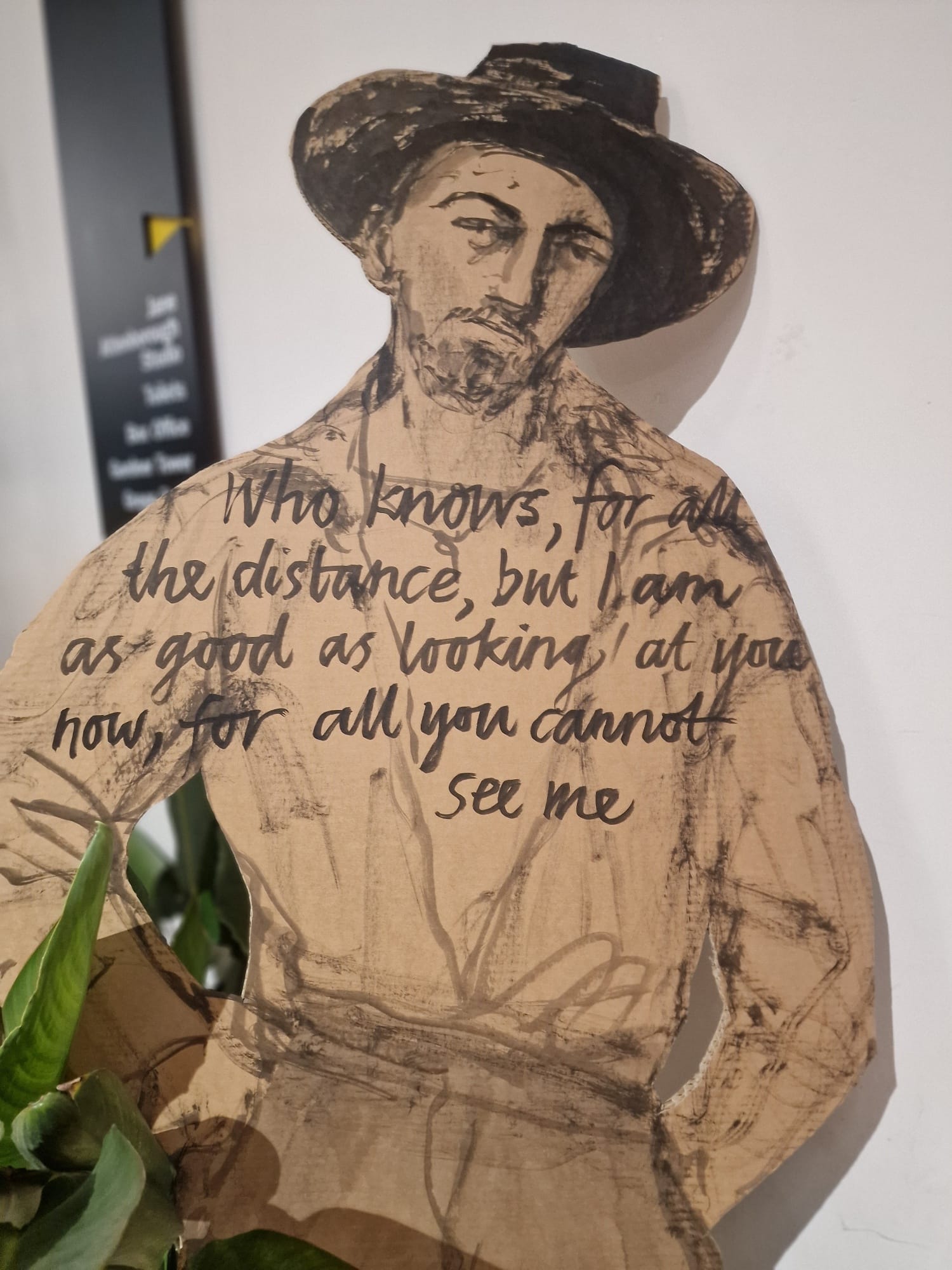
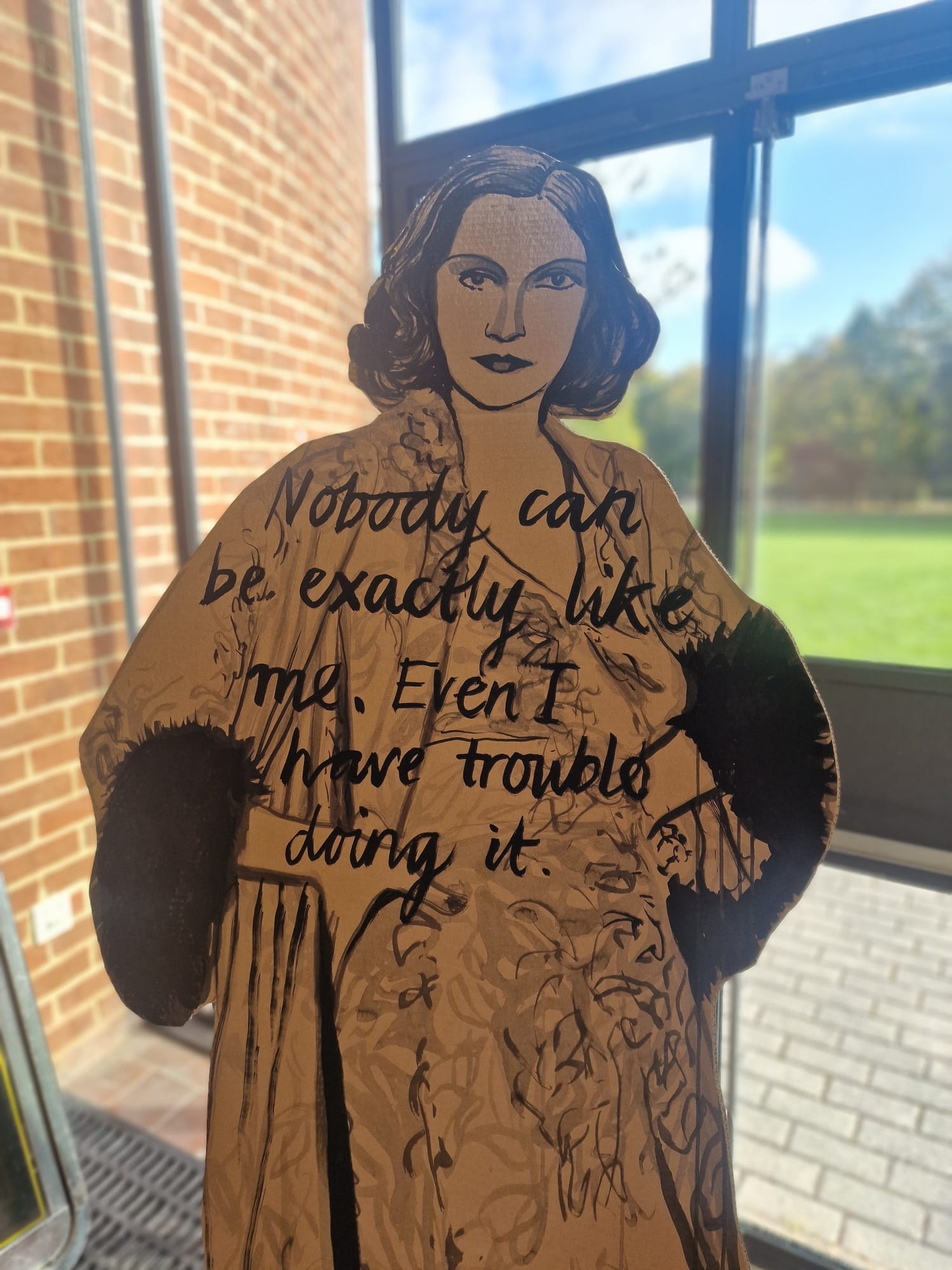
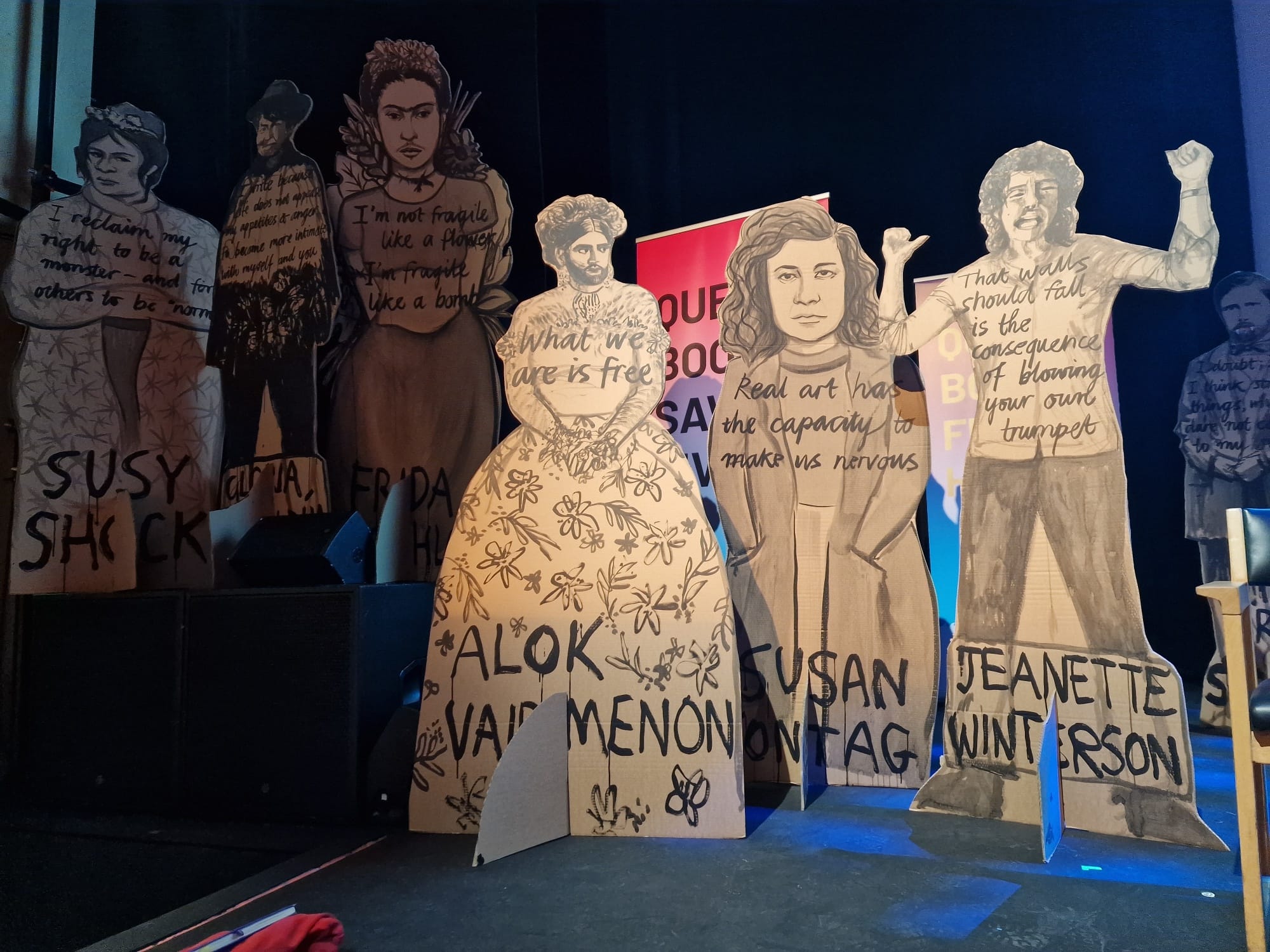
A dazzling lineup of cardboard cutouts, each celebrating queer icons and radical thinkers with handwritten quotes that sparkle with resistance and sass.
Coast is Queer is what arts funding should look like when it's done with excellence, flair, and genuine commitment to both artistic merit and democratic access. It's a model that other festivals—queer and otherwise—should study closely. New Writing South, Marlborough Productions, ACCA, Sussex and Brighton Universities, and the charming, well-informed team of volunteers who shepherded us all with such grace deserve an ovation. They continue to create something genuinely radical: a space where artistic rigor and radical inclusion aren't in tension but in harmony.
This is the festival we deserve. This is the festival that proves what's possible when we resource queer arts properly, program with both ambition and care, and build spaces that truly welcome everyone. The Coast is Queer isn't just super—it's essential. It's a lighthouse, showing us the way forward.
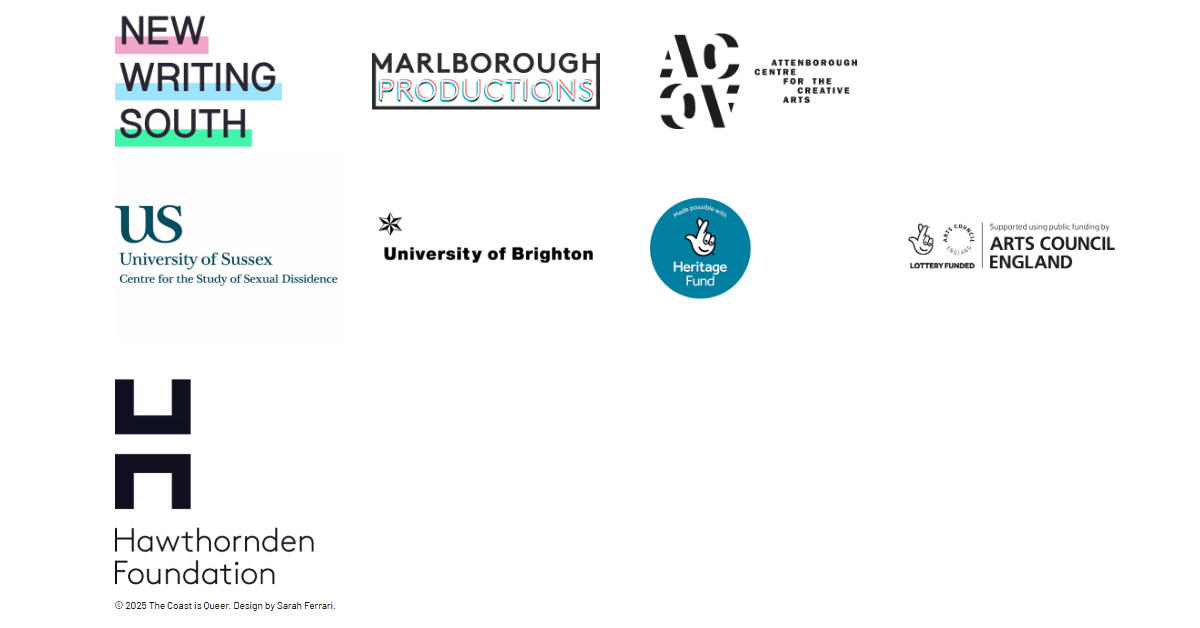



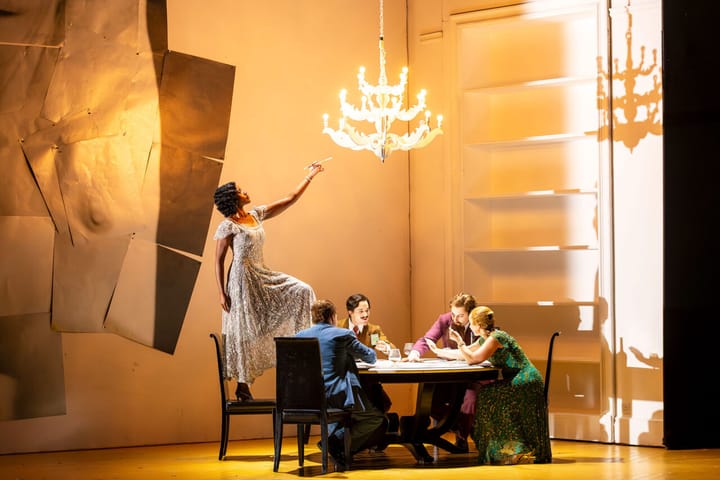
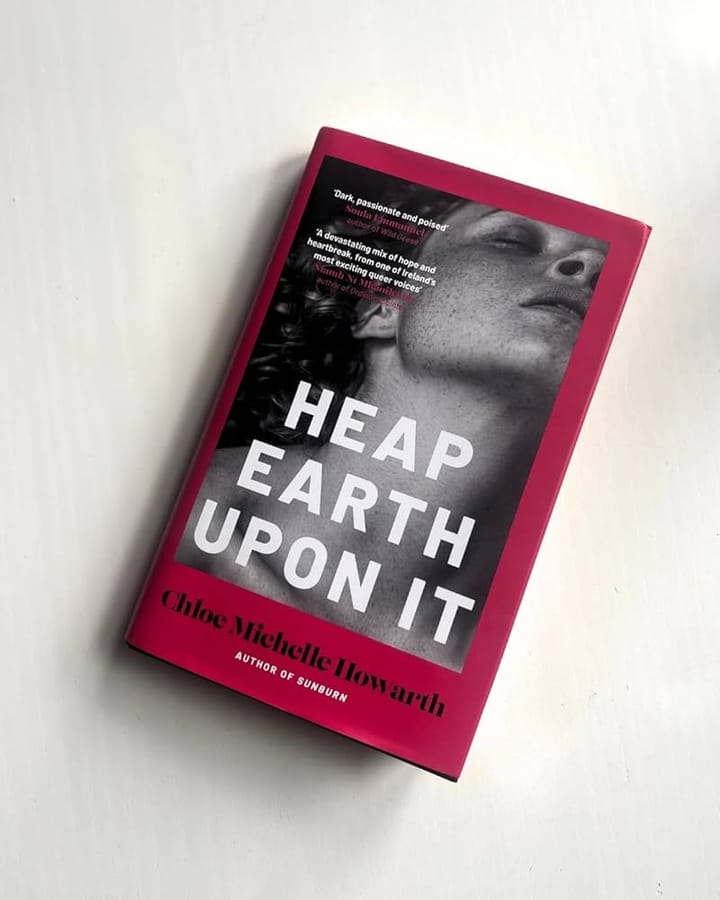
Comments ()